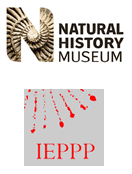

All images are copyright to the Natural History Museum, London
Background
 'Amateurs
as Experts' is a sociological study of contemporary social and knowledge
networks set in motion by the UK's policy on biodiversity. It arises from
a collaboration between the Institute for Environment, Philosophy and
Public Policy at Lancaster University and the Natural History Museum in
London and comes at a time when challenging new developments are occurring
within official approaches to the Biodiversity Action Plan (BAP) process
in the UK.
'Amateurs
as Experts' is a sociological study of contemporary social and knowledge
networks set in motion by the UK's policy on biodiversity. It arises from
a collaboration between the Institute for Environment, Philosophy and
Public Policy at Lancaster University and the Natural History Museum in
London and comes at a time when challenging new developments are occurring
within official approaches to the Biodiversity Action Plan (BAP) process
in the UK.
As a partner in the research, the Natural History Museum is tied intimately into the policy process, with the result that the research has an immediate and strong 'user' dimension. Moreover the developments that are occurring in this policy/knowledge domain are of close relevance to themes of central contemporary interest to sociological and anthropological studies of science. Hence the study has a number of inter-related academic, policy and user-related strands and is already bringing bring about important work in, and between, these domains.
The proposed study needs to be seen against the recent historical background of UK Biodiversity policy.
The UN Convention on Biological Diversity emerged as an outcome of the 'Rio Earth Summit' held in 1992. As part of that international agreement over 150 national signatories were required to devise strategies, plans or programmes for the conservation and sustainable use of biodiversity within their territory. In January 1994 the British government published, 'Biodiversity: the UK Action Plan' (HMSO 1994). This document outlined the official UK strategy for the Convention, which, by 1996, was translated into a Biodiversity Action Plan (BAP) process incorporating national and sub-national conservation institutions and actors. This BAP process has, of course, evolved over time in tandem with new thinking and priorities that have emerged along the way. A number of governmental and non-governmental reports, for example, reflect new thinking and debates about the BAP (the NGO document, 'Biodiversity Challenge' (1994); HMSO 1994; Avery et al 2001; DETR 2001).
Two
recent documents (Avery et al. 2001 and DETR 2001) signal the end of five
years of implementation of the UK Biodiversity Action Plan. Coming from
both the NGO and government sectors, the two reports shift the emphasis
in the UK BAP away from an initially strong focus on Habitat Action Plans
and Species Action Plans ('HAPs' and 'SAPs'), and state the case for complementary
'needs' to be addressed.
This shift reflects a broader debate in which the narrow focus on species and habitats has come under criticism (Sergeant 2000).
The newly identified and prioritised 'needs' are not primarily oriented towards species and habitat actions plans, but towards ensuring that the thinking behind the BAP process (and the concept of conservation as a whole) becomes: a) more dynamic; b) more participatory - in the broadest sense. These new priorities themselves have international backing following the 1998 Meeting of the Parties to the Convention on Biological Diversity, which recognised that: a) change is inevitable in the natural world; b) conservation involves societal choices, needing to involve all relevant sectors (POST 2000).
The latest turn in the way that the UK BAP process is being conceived has implications for some very fundamental questions about conservation. For example: 'what should be conserved?'; 'who should be involved in the conservation policy process?'; 'how can maximum participation (especially from the community at large) be achieved?' (Bartlett 2000; Marren 2000). What form could participation of this kind develop into? These questions are relevant to the UK, where the impetus to broaden participation in environmental policy-making has risen to the top of many institutional agendas in recent years, but they are also recognised to be of wider global contemporary relevance, prompting government and the statutory and voluntary agencies, as leaders in the global BAP process, to experiment in new ways with the social networks and knowledges that make up British biodiversity expertise.
A number of key developments are illustrative of the shift away from the hitherto established approach focussing on species and habitat protection (as exemplified by the early UK BAP) and towards the new needs of: a) dynamism in the BAP process; b) participation. Particularly salient developments are:
- The funding of four posts, first within the Natural History Museum (October 2000) and subsequently within the Royal Society for the Protection of Birds and the Natural Environment Research Council (NERC) funded Biological Records Centre. The new posts have provided formally recognised spaces within conservation organisations for 'facilitators' - professionals whose job it is to harness the enthusiasm of up to 100,000 naturalists currently active in the UK, but disengaged from the official biodiversity policy process. The facilitators are charged with spanning the gap between naturalists and the statutory agencies since professionals in the statutory agencies are now concerned that an invaluable source of knowledge, local expertise and data held by naturalists is currently missing from the formal UK BAP process.
- An explicit challenge to an implicitly held value system within much of British conservation which tends to prioritise higher plants, mammals and birds as 'natural' candidates for conservation (DETR 2001). This challenge is controversial (Robertson 2000) and comes from within the conservation community, where prominent actors such as the Natural History Museum and English Nature have begun to champion, research and put investment into the knowledge and protection of 'unlovable species' - for example lower plants and little known invertebrate species (Ajuha 2001).
- A wider encompassing drive from the NGO and Government domains to enthuse and engage wider publics into knowing and experiencing the natural environment. This drive is particularly interesting in the light of an increasing concern with what has been termed a 'taxonomic impediment', suggesting that diminishing numbers of individuals are specialising in the range of skills comprising taxonomy.
The emerging relationships between these developments are central to the focus of the research.

| Update on the Research | Related Information | Contact |
